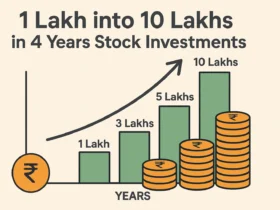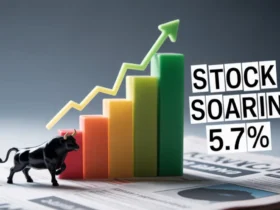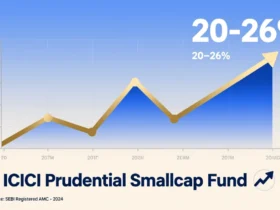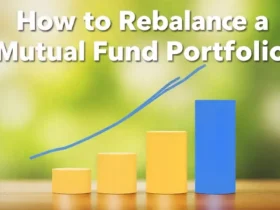Introduction: The Key to Smarter Investing Lies in One Number
You’re standing at the edge of a crowded stock market, the air buzzing with excitement and uncertainty. A stock catches your eye—its price is climbing, the chatter is loud, and your gut says, “This could be it.” But then doubt creeps in. Is it really worth that price? Am I about to overpay—or miss a golden opportunity?
Table of Contents
This is where the price-to-earnings ratio (P/E ratio) swoops in like a financial superhero. It’s a simple yet powerful number that can tell you whether a stock is a hidden gem or a shiny trap. And here’s the kicker: when a stock’s P/E ratio shifts by 10-20% from its norm, it’s waving a flag—either a green one for “buy” or a red one for “think twice.”
In this ultimate guide, you’ll uncover what the P/E ratio really means, how it acts as a stock value indicator, and why that 10-20% range could be your secret weapon in the market. From real-life examples to expert insights, we’ll arm you with everything you need to invest with confidence. So, grab a coffee, settle in, and let’s decode this game-changer together—you won’t want to miss a word.
What is the Price-to-Earnings Ratio?
The price-to-earnings ratio, or P/E ratio, is like a price tag on a stock’s earnings. It tells you how much investors are willing to pay for every rupee (or dollar) of a company’s profit. The formula is straightforward:
P/E Ratio = Current Stock Price ÷ Earnings Per Share (EPS)
For example, if a company’s stock is trading at ₹100 and its EPS is ₹5, the P/E ratio is 20. Simple, right? But behind that simplicity lies a treasure trove of insight.
Why Does the P/E Ratio Matter?
Think of the P/E ratio as your investing compass. A high P/E might mean the stock is overhyped—or that investors expect explosive growth. A low P/E could signal a bargain—or a company in trouble. It’s not just a number; it’s a story about market expectations, growth potential, and value.
But here’s the catch: the P/E ratio doesn’t exist in a vacuum. To truly understand it, you need context—like comparing it to historical averages or industry norms. And that’s where the 10-20% stock value indicator comes into play.

The P/E Ratio as a Stock Value Indicator
At its core, the P/E ratio helps you answer a critical question: Is this stock priced fairly? By comparing a company’s current P/E ratio to benchmarks—like its own historical average or the industry standard—you can spot whether it’s trading at a premium or a discount. And when that difference hits 10-20%, it’s time to pay attention.
Decoding the 10-20% Range
Let’s break it down. If a stock’s historical P/E average is 15 and its current P/E jumps to 18, that’s a 20% increase (18 ÷ 15 = 1.2). This could mean the stock is overvalued—or that the market sees brighter days ahead. On the flip side, if the P/E drops to 12, that’s a 20% decrease (12 ÷ 15 = 0.8), hinting at undervaluation—or underlying issues.
This 10-20% swing isn’t arbitrary. It’s a sweet spot where the signal gets loud enough to act on, without being drowned out by daily market noise. Let’s see it in action.
Case Study: Tech Titan vs. Steady Manufacturer
Meet two fictional companies: Tech Titan Ltd. and Steady Manufacturing Co. Their P/E ratios tell very different tales.
Tech Titan Ltd.
- Current Stock Price: ₹500
- EPS: ₹20
- Current P/E Ratio: 25 (₹500 ÷ ₹20)
- Historical Average P/E: 20
- Industry Average P/E: 22
Deviation:
- From historical average: +25% (25 ÷ 20 = 1.25)
- From industry average: +13.6% (25 ÷ 22 ≈ 1.136)
Tech Titan’s P/E is soaring above its norms. Is it overvalued? Maybe. Or perhaps its new AI product is fueling investor excitement. Context is key.
Steady Manufacturing Co.
- Current Stock Price: ₹120
- EPS: ₹10
- Current P/E Ratio: 12 (₹120 ÷ ₹10)
- Historical Average P/E: 15
- Industry Average P/E: 14
Deviation:
- From historical average: -20% (12 ÷ 15 = 0.8)
- From industry average: -14.3% (12 ÷ 14 ≈ 0.857)
Steady Manufacturing’s P/E is lagging. Undervalued gem? Or a sign of stagnant growth? Dig deeper.
Table 1: P/E Ratio Comparison
| Company | Current P/E | Historical Avg P/E | Industry Avg P/E | Deviation (Historical) | Deviation (Industry) |
|---|---|---|---|---|---|
| Tech Titan Ltd. | 25 | 20 | 22 | +25% | +13.6% |
| Steady Manufacturing Co. | 12 | 15 | 14 | -20% | -14.3% |
This table paints a clear picture: Tech Titan is trading at a premium, while Steady Manufacturing looks discounted. But numbers alone don’t tell the full story—let’s explore why.
Factors That Shape the P/E Ratio
The P/E ratio isn’t static. It’s influenced by a cocktail of factors that can push it up or pull it down. Here are the big players:
- Growth Prospects: High-growth companies (think tech startups) often sport higher P/E ratios as investors bet on future profits.
- Risk Levels: Riskier firms—like those in volatile sectors—might see lower P/E ratios as investors demand a safety cushion.
- Industry Trends: P/E ratios vary wildly by sector. Tech averages might hover around 25, while utilities sit closer to 15.
- Market Sentiment: Optimism drives P/E ratios up; fear drags them down.
Expert Insight #1
Legendary investor Warren Buffett once said:
“The P/E ratio is a useful tool, but it’s not the whole toolbox. Look at the company’s fundamentals—its management, its moat, its future.”
Buffett’s right. A P/E shift of 10-20% might signal opportunity, but you’ve got to peek under the hood.
How to Use the P/E Ratio Like a Pro
Ready to wield the P/E ratio in your investing toolkit? Follow these steps:
- Calculate the Current P/E: Divide the stock price by EPS. Easy peasy.
- Pick Your Benchmark: Historical average, industry average, or both.
- Measure the Gap: Is the current P/E 10-20% above or below the benchmark?
- Dig Into Context: Growth, risk, market trends—why is the P/E where it is?
- Decide with Confidence: Overvalued? Undervalued? Time to buy, sell, or hold?
Table 2: P/E Ratios Across Industries (2023)
| Industry | Average P/E | 5-Year Historical Avg | Deviation |
|---|---|---|---|
| Technology | 25 | 22 | +13.6% |
| Manufacturing | 14 | 15 | -6.7% |
| Healthcare | 18 | 17 | +5.9% |
| Energy | 12 | 13 | -7.7% |
This table shows how P/E ratios shift over time and across sectors. A tech stock at 25 might be normal, while an energy stock at 12 could be a steal—or a dud.
Expert Insight #2
Financial analyst Priya Sharma weighs in:
“A P/E ratio 10-20% above historical norms isn’t always a red flag. It could mean the company’s growth story has leveled up. Check the earnings trajectory.”
The P/E Ratio’s Blind Spots
The P/E price-to-earning ratio is a superstar, but it’s not flawless. Watch out for these pitfalls:
- Debt Blindness: A low P/E might hide a mountain of debt, making a “cheap” stock riskier than it seems.
- Growth Oversight: High P/E ratios on fast growers (like Tesla) might be justified by explosive potential.
- Earnings Tricks: Companies can tweak earnings, skewing the P/E ratio.

Expert Insight #3
Economist Dr. Anil Gupta warns:
“Don’t worship the P/E ratio. Cross-check it with cash flow, debt levels, and growth rates for the full picture.”
Table 3: P/E vs. Other Metrics
| Metric | What It Measures | Strength | Weakness |
|---|---|---|---|
| P/E Ratio | Price vs. earnings | Simple, widely used | Ignores debt, growth |
| PEG Ratio | P/E adjusted for growth | Growth-focused | Relies on forecasts |
| Price-to-Book (P/B) | Price vs. asset value | Good for asset-heavy firms | Less relevant for tech |
This table shows why a multi-lens approach beats leaning on P/E alone.
FAQ: Your P/E Questions Answered
What’s a “Good” P/E Ratio?
It depends! A P/E of 15-20 is average for many sectors, but tech might hit 30+, while utilities dip below 15. Context is everything.
How Does P/E Differ from PEG?
The PEG ratio factors in growth (P/E ÷ growth rate). A PEG below 1 might signal a bargain; above 1, a premium.
Can P/E Be Negative?
Yes, if earnings are negative. But a negative P/E isn’t useful—look at revenue or cash flow instead.
How Often Should I Check P/E?
Quarterly, alongside earnings reports, keeps you in the loop without overanalyzing.
Is a Low P/E Always Better?
Not always. Low P/E could mean undervalued—or underperforming. Investigate!
Conclusion: Your Path to Smarter Investing
The price-to-earnings ratio isn’t just a number—it’s your window into a stock’s soul. A 10-20% swing from its historical or industry norm can spotlight opportunities or pitfalls. But it’s not a crystal ball. Pair it with deeper research—growth trends, debt, market vibes—and you’ll invest with eyes wide open.
So, next time you’re eyeing a stock, don’t just glance at the price. Dive into its P/E ratio, decode its story, and ask: Is this a diamond in the rough or a mirage? You’ve got the tools now—use them.
Call-to-Action: Ready to master stock picking? Explore our deep-dive guide on fundamental analysis and start building your wealth today!
































Leave a Reply